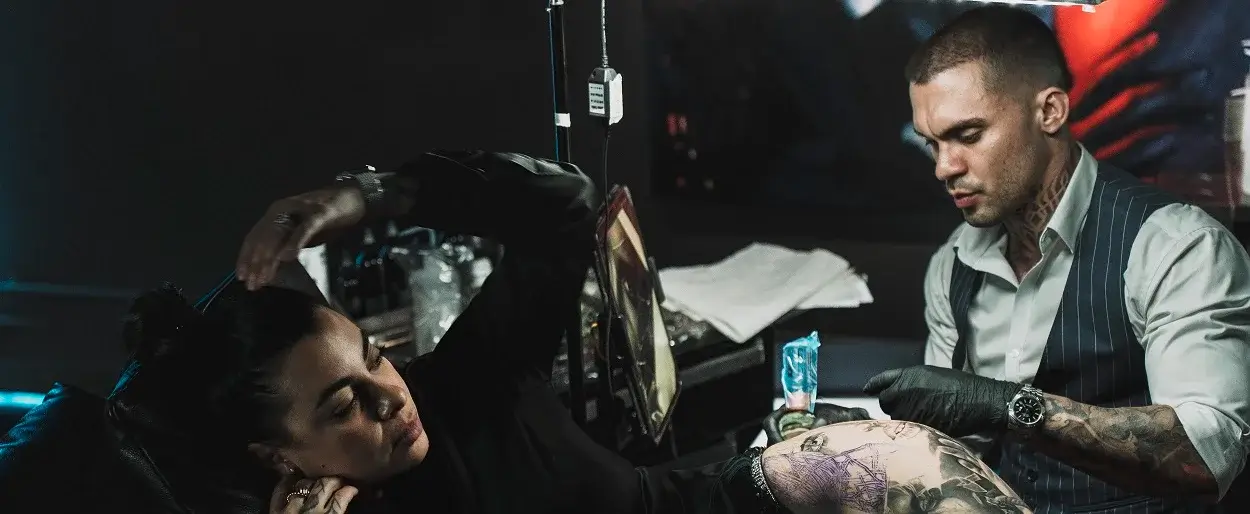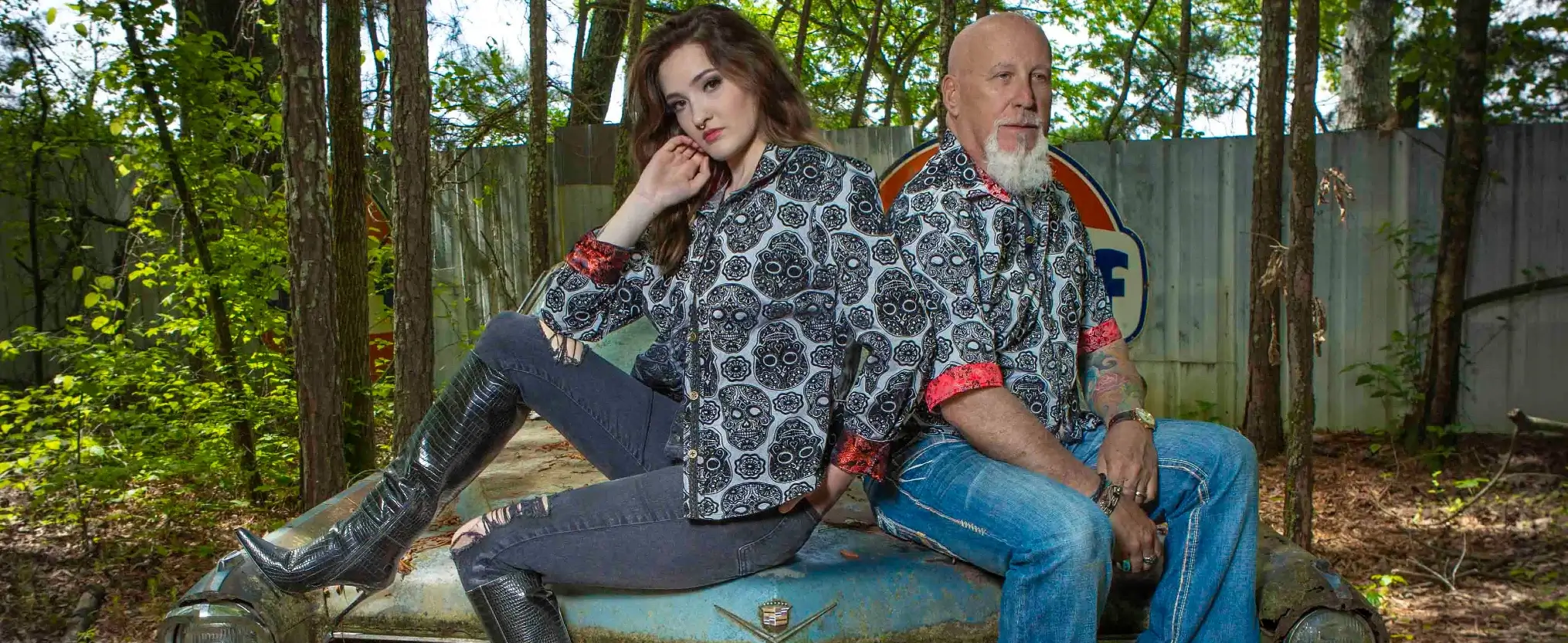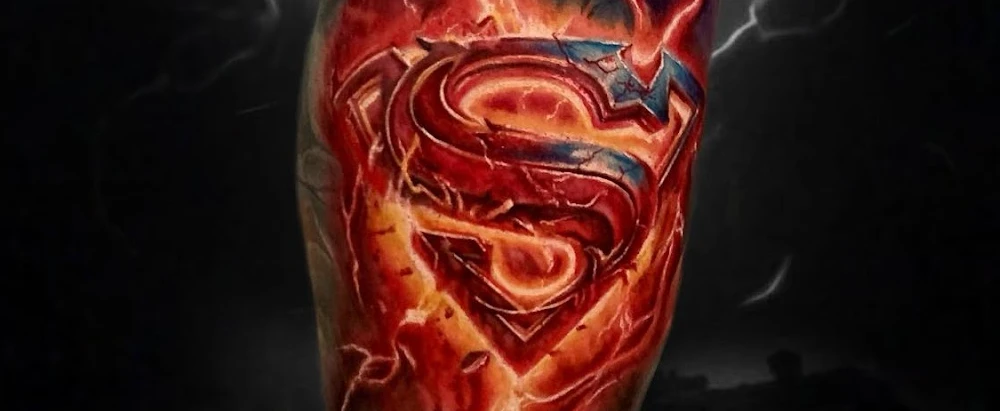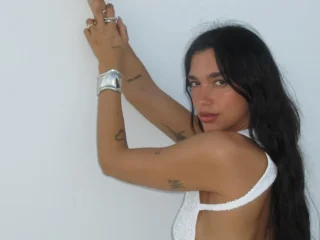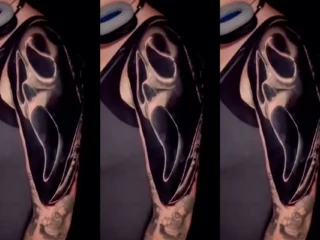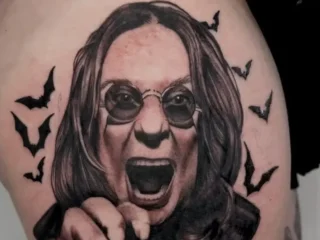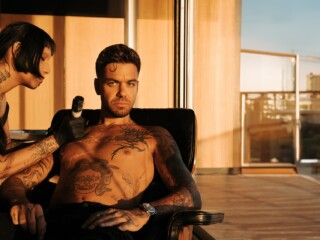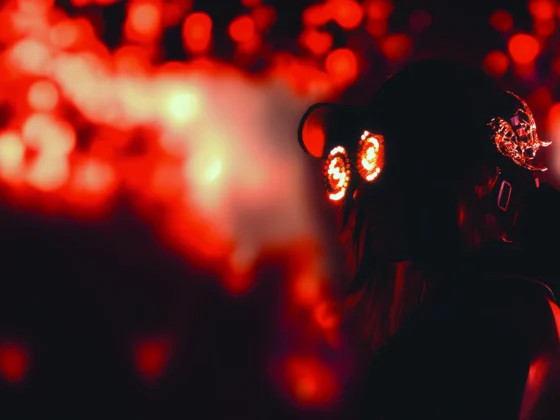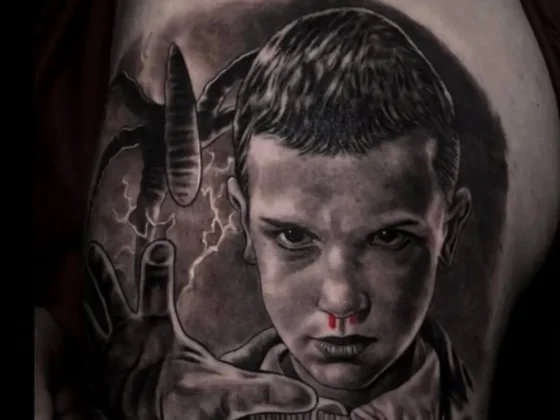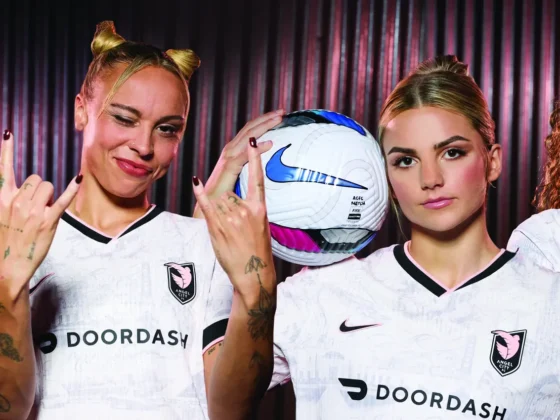Inked Mag Staff
September 28th, 2015
Femininity and the Tattoo Industry
While tattooing in the United States dates back to the mid 19th century, it wasn’t until 50 years later that a female tattoo artist emerged onto the scene. Maud Wagner,…
While tattooing in the United States dates back to the mid 19th century, it wasn’t until 50 years later that a female tattoo artist emerged onto the scene. Maud Wagner, an aerialist and contortionist, became the first famous female tattoo artist after meeting her husband, tattoo artist Gus Wagner. Wagner was one of the few tattooed women who found work in the circus, with performers such as Nora Hildebrandt—the daughter of America’s first tattoo artist Martin Hildebrandt—and Irene Woodward gaining immense popularity for their taboo body modifications. Wagner began tattooing as an apprentice for her husband while she was still working as a circus performer, learning the art of traditional “hand-poked” tattoos despite the fact that the tattoo machine had been invented in 1891. Wagner set the pace for many female artists to develop within the industry, including American traditional artist Kate Hellenbrand.

In 1971, the world of tattooing was introduced to Hellenbrand, or Shanghai Kate, as she is professionally known. Hellenbrand began her career with an apprenticeship under iconic American traditional artist, Sailor Jerry Collins and has since worked alongside artists Ed Hardy and Jack Rudy. Both Wagner and Hellenbrand were pioneers who had succeeded in breaking into the hugely male dominated industry of tattooing and excelling in what was once a men’s only trade. But it wasn’t until the 21st century—when artists such as Kat Von D, Megan Massacre and Rose Hardy came along—that female artists began to drastically alter the public’s perception of women with tattoos.

Von D, Massacre and Hardy are not only some of the most famous female artists of this tattoo era, but are some of the most recognizable names in pop culture. What has helped these artists to stand out amongst the crowd is not only their spectacular and inventive artistic techniques, but their abilities to relate to an untapped market in the tattoo world—women. Instead of tattooing for the boys, these artists specialize in the kind of tattoos that women had been waiting for, designs that appealed to the feminine perspective. In the last decade more and more artists have emerged that display a recognizably feminine style of tattoos; from flowing watercolor designs to a Kawaii/New School hybrid art, which has in turn caused more women to feel included and accepted within the tattoo community. Finally, we are seeing tattoos that amplify the female aesthetic within the men’s world of tattooing. This visibility has allowed both the female artists who specialize in these styles as well as the women who embrace feminine tattoos to gain acceptance within the tattoo industry. Yet, despite an increasing number of artists who specialize in more feminine styles of tattooing, there is still gender bias within the tattoo community. While these new feminine tattoo styles have encouraged more and more women to be tattooed and still be girly, what about the girls who prefer styles that are stereotypically worn by men? Are women who still want to be seen in a feminine light bound to tattoos that are very clearly designed for women?

Even though women with tattoos are more accepted than ever before, in large part due to the presence of female-specializing tattoo artists, there are still arguments held over whether or not women should wear characteristically masculine tattoos. For example, it is very common to see a woman with a flower tattoo on her shoulder, but a woman with a large traditional style chest piece could be criticized as being masculine for her tattoo. While the female specializing artists have made great progress to aid in making more feminine designs available, they have not eliminated some of the age old stigmas surrounding femininity and women with tattoos. Women in the tattoo industry often walk a very fine line of masculinity and femininity, as the tattoo world has been male dominated since its origin and for decades the only women who had tattoos were viewed as rebels of society, from circus performers like Maud Wagner to women of biker bars. It took years for women to even begin to gain respect for having tattoos and it is safe to say that these feminine styles of tattooing allowed an escape for women to have tattoos and avoid scrutiny. After all, there’s no denying that delicate peonies or adorable woodland animals are hallmark symbols of fragility and femininity, even when they are in a tattoo, thus there’s no way of disputing that such subjects add to a woman’s feminine appearance. Yet the same cannot be said for a woman who chooses to rock a Grim Reaper tattoo, a design that will not project her feminine identity. It can be the case that women embrace girly styles or subjects as a way to further embellish upon their femininity or simply because they like the aesthetic, but also as a way to play it safe as tattooed woman. We still live in a society that judges women more harshly for having tattoos than they do men and many women fear that if they embrace a more masculine style of tattoo that they will lose their femininity. Yet, what is a tattooed woman with a flair for strong Polynesian tribal or vibrant American traditional to do? Well ladies, if you want to gain the territory of being a badass woman who doesn’t give a fuck about what people think about her, it is time to be fearless and use beautiful art as a way to prove that a woman who prefers traditionally masculine tattoos can be gorgeous and feminine.

Femininity isn’t just one narrow definition set in stone by the dictionary, but an umbrella term for anyone who identifies themselves as a woman (whether born biologically female or not). Women get tattoos to feel beautiful, to feel powerful as a females and whether a woman has a tattoo of a watercolor dove or a fire breathing dragon, she has the power to establish herself as a feminine woman. By consistently defying society’s views of what a woman or a tattooed woman should look like through the expression of all tattoo styles, we will see a continuation of the progress of female acceptance within the tattoo community. The only way for women to gain full acceptance within the tattoo industry is for women to demand respect for their bodies and their art, by not allowing anyone else to determine whether or not a women will lose her femininity with a specific style of tattoo. Whether you are male or female, tattoos have long been a tradition of rebellion from the norms of the mainstream and as feminine and empowered women, we should not be afraid to be just as badass through our kick-ass tattoos as the guys who have worn the styles for years. At the end of the day, we all have the freedom to get whatever style or subject that we desire inked on our bodies forever, so why should someone else’s definition of femininity matter?
Editor's Picks
Bridging Classical Art and Modern Tattooing
Esteban Rodriguez brings the discipline of classical fine art to the living canvas of skin, creating hyper-realistic tattoos that merge technical mastery with emotional depth.
Show Your Ink Fashions Brings Custom Style to Tattoo Culture
Show Your Ink Fashions creates custom shirts designed to showcase your tattoos as wearable art, blending fashion with personal expression.
The Ultimate “Superman” Tattoo Roundup: Just in Time for Superman’s Return to Screens
With Superman’s big return to theaters, fans are revisiting some of the most iconic ink inspired by the Man of Steel.


